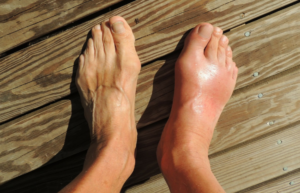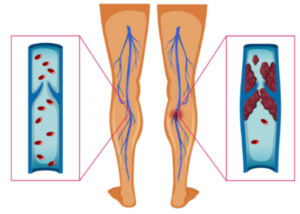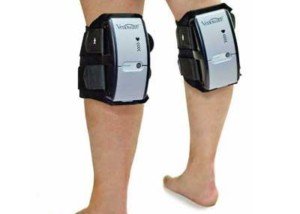
Wondering if your risk of deep vein thrombosis goes up if you must wear a cast or a splint?
“Any kind of immobility, which slows down the blood flow in the legs, will increase the risk of DVT,” says Dr. Paramjit “Romi” Chopra, MD, founder of the Midwest Institute for Minimally Invasive Therapies (MIMIT), an interventional radiology and endovascular therapy practice.
“When we walk, our calf muscles act as pumps to work against gravity and pump blood from the legs back to the heart,” explains Dr. Chopra.
The German Institute for Quality and Efficiency in Health Care (IQWiG) conducted a study on young athletes — who, by the way, are not immune from a deep vein thrombosis.
Young athletes with a cast or splint are at increased risk for deep vein thrombosis, especially if they’re sitting for extended periods on a bus or airplane traveling with their team.
After all, the cast or splint forces a considerable degree of immobilization, even if the cast only goes from the ankle to below the knee for a broken ankle.
The limited movement from the leg, due to the cast or splint, can also increase risk of deep vein thrombosis forming in the pelvis.
What Should You Do?
So if you end up with a cast or splint on your leg or a portion of your leg, what should you do, to minimize developing a deep vein thrombosis?
Get back on your feet and move around as soon as possible. Of course, this is easier said than done when you have an injury.
The next defense is medication: anticoagulant drugs, also known as blood thinners, which reduce clotting ability in the blood.
Blood thinners do not bust up the clot (that’s another class of drugs known as “clot busting” or thrombolytic drugs).
But they can prevent pre-existing clots from getting bigger, and of course, blood thinners go a long way in preventing the formation of new deep vein thromboses.
Ditch the Cigarettes + Other Preventive Measures
Another way to reduce the risk of deep vein thrombosis while you’re stuck in a cast or splint is to quit smoking if you’re a smoker.
Next, if you have high blood pressure, get it under control asap.
Ask your orthopedic or sports medicine physician to recommend some exercises you can do with the leg that has the cast or splint.
For instance, if only the lower part of your leg is in the contraption, you can do quite a bit of exercising with that leg.
- For example, get on all fours.
- Bring the knee of the affected leg towards your chest, then extend the entire leg out straight behind you.
- Bring the knee back in, and so on, for 10-20 repetitions. Switch legs.

Freepik, yanalya
Another exercise is to be on all fours but extend the leg out to the side.
If the entire leg is in a cast, lie on your back and lift the leg up and down (if your doctor clears you for this).
Or, while standing on your good leg, swing the casted leg from the hip, or make circles with it.
Do these exercises every so often to reduce the risk of deep vein thrombosis.










































